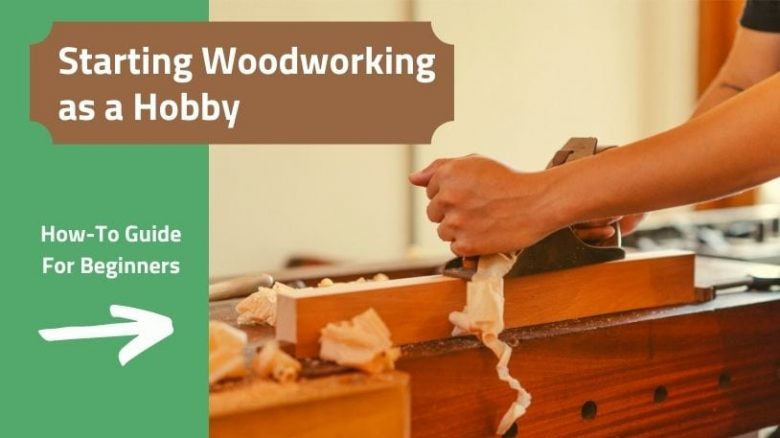Woodworking is a broad hobby, and people often find it difficult to know where to start. This guide will give you pointers on the basics we consider necessary. We’ll also point you toward some resources that may assist.
I was lucky that my father introduced me to woodworking when I was a small boy, and I grew up around wood and woodworking tools. However, learning about woodworking is a lifelong journey, as you can never know it all. I learn something new every day, making it such a rewarding pastime.
Stay with me for the next few minutes, and I’ll touch on a few issues I feel are important to know about starting woodworking as a hobby.
What tools do you need?
Getting started does not need to be expensive, and having more tools and powered equipment doesn’t make you a woodworker. What makes you a woodworker is handling wood, getting the feel of it, and learning how it responds under different circumstances. You need to learn to produce good quality work with a basic toolkit. From there, you can begin to add more specialized tools to your armory.
I’ve selected a basic set of twenty tools whose price is geared to the beginner. You don’t need to buy top-shelf tooling only to find that woodworking is not your thing. Start with these items, then upgrade to higher quality as you progress. At the time of writing, all items below came in around $330 total. Some are lower priority than others. Take off the plane, the electric drill, and the whetstone, and you’re back to $230. Buy them in stages if you must, rather than all at once. If some of these tools are unknown to you, don’t worry; we’ll add an FAQ at the end of the article.
Protection
- Glasses – Always wear these in the workshop
- Work gloves
Measuring and Marking
- Tape measure – I’ve chosen a 16-foot measure, but smaller works.
- Stainless steel 6-inch rule – I prefer one with both imperial and metric measures
- Carpenters pencil – An ordinary pencil will do at a pinch
- Marking knife – This one is good for left or right-handers
- Marking gauge – Used to scribe a line parallel to a reference edge or surface
- Combination square
Fastening
Cutting
- Panel saw – For crosscutting and ripping timber
- Tenon saw – For finer work, cutting tenons or dovetails
- Wood chisels
Drilling
Other tools
- F-clamps – Used to temporarily hold pieces of wood together
- Whetstone – Used with water to sharpen chisels
- Wooden Mallet – Used for jointing and for chiselling
- Sanding block – You wrap sandpaper around these to sand the wood
- Jack plane – If you have a tight budget, this can wait. Not top priority
What tools do you NOT need?
Power tools are nice, as they speed up your work and help with accuracy. They’re also expensive and often unnecessary when you first start. Once you have the money, you might consider a table saw, router, drill press, and sander.
You will need other tools, but you can make those, and they’re good starter woodworking projects. Bench hooks and shooting boards are two that spring to mind, and we’ll discuss these later.
Do I need a workshop?
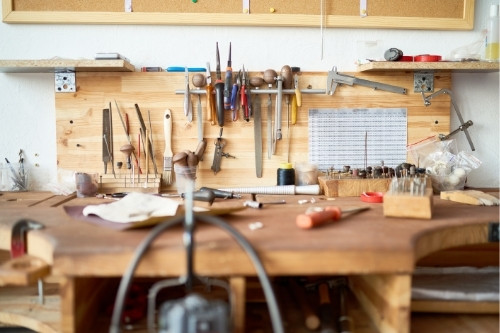
No. You need a space you can set up and a surface on which you can work. I used two sawhorses with plywood on them when I started, and I set them up in my parents’ carport. That’s hardly ideal, not good ergonomics, and cold in winter, but it got me started. If you have a space in the garage or a room in the house where you can make a mess, that’ll do just fine. Just keep the vacuum handy for cleanup later.
As we note later in the starter projects section, making a basic workbench is a great project. A table on which to work is good for your back, making a stable base. The bonus of a stable workbench is that you can add a vise. While you can manage without a vise, one does make life easier and safer.
If you have an extra $90 cash, consider buying a foldable workbench to get you started, although it’s not essential. It sets up in seconds and has a vice, plus other clamping methods for strange-shaped objects.
Be sure the space you use has adequate lighting. There’s nothing worse than working in your own shadow, so I prefer incandescent lighting, halogen, or LED panels to light up my workspace. The old fluorescent lights strobe imperceptibly at 50 or 60Hz and can make rotating machinery such as drills or table saws look as though they’re stationary. That’s a safety hazard; avoid working under them if you can.
Related: How to set up a small garage workshop
What wood should you use?
You should learn two basic categories of wood: softwood and hardwood. Confusingly, the terms don’t refer to the hardness or otherwise of the wood. As an example, balsa wood is hardwood despite being light and soft, and yew is softwood despite being very hard.
The terms refer to whether the wood comes from trees that have needle-like leaves and carry their seeds in cones, such as spruce and pine. Or from trees with broad leaves that reproduce through flowers. With that said, many hardwoods we use in woodwork are denser and more durable than softwoods. Let’s look at a couple from each category that you can easily buy and use. Then, we’ll discuss engineered woods.
Softwoods
Pine
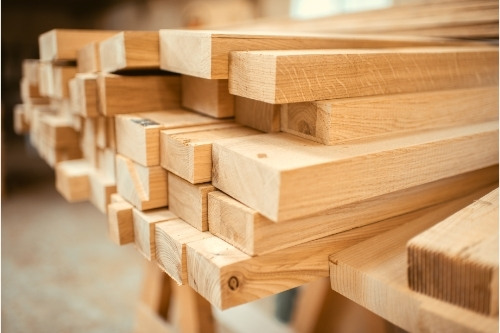
A commonplace timber, pine is cheap, plentiful, and farmed in plantations, so it’s a sustainable resource. Lower-grade pine is used for framing, as it has knots and can easily warp. The higher-grade pine has fewer blemishes and is ideal for shelves, boxes, benches, or other everyday objects.
It looks great and has a nice smell, although it can be resinous, sometimes making painting and staining difficult. Pine doesn’t take abuse, however, as it can easily dent and show wear, so be thoughtful about where you might use it.
It is good for inside use, but it needs to be treated as it’s not very resistant to decay if used outside.
Cedar
Cedar is light and lovely to work with, and it also looks and smells great. You can get either white or red cedar, with the white variety weathering to a nice silvery color while the red variety deepens in color. Cedar is naturally resistant to rot and pests, so you can use it internally and externally. It’s used to line boxes and chests holding clothes, as the natural oils repel moths, hence the wooden mothballs you can buy made of cedar.
It’s slightly more expensive than pine but still cheap. Just be aware that some people can be allergic to the oil in cedar, so avoid prolonged exposure to the skin.
Hardwoods
Oak
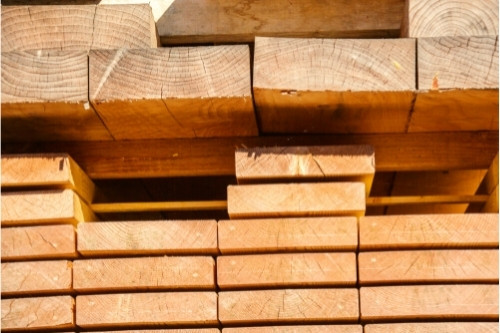
Beautiful to look at, oak is a dense and heavy timber and very hard-wearing. It’s a wood predominantly used in boat building, flooring, making barrels, fine furniture, and tool handles.
If you want the softer variety of oak, choose red oak. White oak is often used for flooring, given that it’s so hard-wearing. It will take paint and stains well, although you may need a couple of coats because it has a prominent grain. While more expensive than pine, it is surprisingly affordable at your local timber supplier.
Birch
Birch is another sustainable timber that is readily available. It’s an attractive wood and sands well to a lovely finish, given its small pores. It’ll take paint well, although staining it can be problematic. It’s also a little cheaper than oak and often used as an oak substitute.
You will need to be sure your tools are sharp and regularly resharpen them, given birch’s hardness. The wood is also very heavy due to its denseness.
Engineered Woods
Plywood
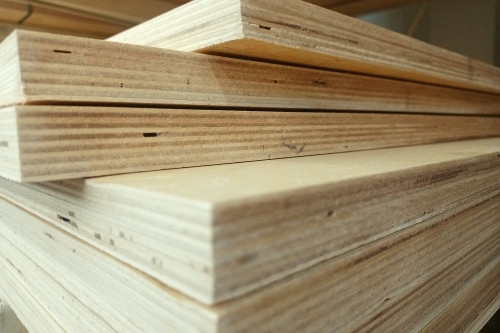
Plywood consists of a few layers of veneer stacked together and glued under pressure and heat. Each veneer layer is placed to ensure its grain runs differently from the ones above and below. Such construction ensures that once glued, plywood is dimensionally very stable. It’s also very strong.
Just about anything you can make from natural wood, you can make from ply. You can buy different thicknesses of plywood, with the higher quality plywood sheets having surfaces with a lovely grain pattern from a range of timbers. Just be aware that the edge of the ply shows the layers, so you may need to attach an edging strip if you don’t wish that effect.
Medium Density Fiberboard (MDF)
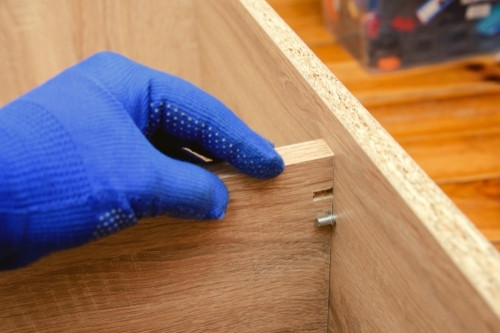
MDF is constructed from wood fibers bonded with a synthetic resin adhesive, making it denser than plywood. It’s a versatile substance and widely used as a low-cost alternative to wood. It has a hard, flat surface, making it suitable for use under a veneer.
MDF machines, screws, and glues well. However, it will split if you screw into the board’s edge. It also does not tolerate water well, mushrooming out in a fluffy mess and losing its strength.
Projects to consider
Bench Hook
A bench hook is a useful tool for crosscutting timber using your tenon saw. It allows you to hold the wood with one hand while cutting with the other. The design prevents wood movement, assists with accurate cuts, and can be made to suit right or left-handers.
There are three components to a bench hook: the stop, the bed, and the hook. Most woodworkers make theirs from scrap timber, and it’s a great first project for a beginner. Here’s a link to a good video explaining how to make a bench hook and some of the other uses you can put one to. If you don’t have any power tools, don’t worry. Everything can be cut by hand.
Shooting Board
A shooting board is similar to the bench hook, but it’s used with your plane to get an accurate, straight, parallel surface when joining timber. It’s particularly good for planning the end-grain of timber.
It has the same stop, bed, and hook, but another component is the fence along which the plane runs. This video explains how to make one from plywood and shows the shooting board in use.
Workbench
While a workbench may seem to be a big project, it needn’t be. Yes, I’ve seen some workbenches that cost thousands and belong in a museum, but we want a simple and cheap workbench made with a minimum of tools. Most importantly, the finished bench must be sturdy and fit wherever you plan to use it. The following video uses cheap materials and a minimum of tools to produce a perfectly good work surface.
Where to buy wood
Every country has hardware stores that sell wood in planks, sheets, or profiles. Home Depot, Lowes, and Ace Hardware are widespread in the US. Wickes, Homebase, and Travis Perkins offer similar products in the UK. Most will provide a cutting service to ensure you can get the wood into your car.
These shops have a limited range, but they’re fine for basic softwoods and hardwoods. They’re also good if you wish to look at and handle the wood before purchase. Be sure to take a cut list of what you need, so you don’t become overwhelmed when you get there.
However, in the internet age, we are blessed with considerable choice, and if you search for timber suppliers near you, you’ll have plenty from which to choose. These suppliers are great when you know what you want or you need something more exotic or hard to find.
Can you make money from woodworking?
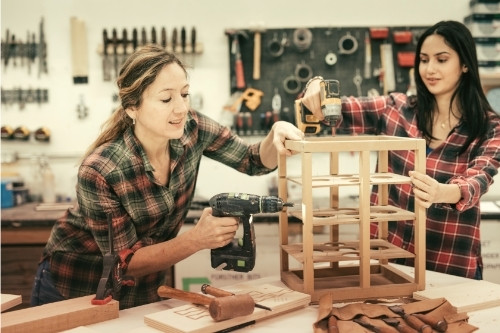
Yes, you can; you’ll be amazed just how popular hand-crafted goods have become. My advice, however, is not to start out to make money. You need to learn the basics and then begin crafting different objects, as with any hobby.
Maybe you wish to create artistic pieces, functional tools, or even furniture. Many new woodworkers begin making boxes, food chopping boards, or children’s toys. As you develop your skills, you’ll understand where your interests and capabilities lie.
Once you can produce items of consistently good quality, you might consider selling them at farmers’ markets or exhibiting them at art exhibitions. The online world is also full of opportunities to market and sell your products.
Summary
Woodworking can appear overwhelming to people wishing to learn, but remember to start with the basics. Learn basic hand tool use, and begin cutting, planing, and drilling wood to get a feel for it. Start with some small and simple projects to gain confidence.
If you prefer, woodworking courses will be available in your area, offering training from beginner level through to advanced techniques. Just search online to find the location and tuition level that suits you.
You’re embarking on a journey of lifelong learning, but you’ll struggle to find a more rewarding and satisfying hobby. Good luck.
F.A.Q
I’ve listed a few tools above that may not be familiar to you. Here are some explanations of the less obvious names.
What is a marking knife?
A marking knife is a bladed tool used to cut a visible line on the surface of wood when marking out. Usually made of tool steel, one side is flat to run along a straightedge, and the other is beveled to form a sharp edge. They leave a finer line than a pencil and are more accurate. They also assist in starting a cut with a handsaw or chisel.
What is a marking gauge used for?
A marking gauge is used to scribe a line parallel to a reference edge or surface. It consists of a beam that slides through a headstock. At one end of the beam, a pin or wheel is used to mark the wood. The headstock adjusts along the beam to the required distance, allowing a line parallel to an edge to be scribed.
How do you use a combination square?
The combination square consists of two components: a rule and a head. The head has two faces, one exactly 90 degrees to the rule and the other at 45 degrees. The head can be slid up and down the rule and locked with a thumbscrew.
It is used with a pencil or marking knife to scribe lines perpendicular to an edge or 45 degrees to an edge. The adjustable rule also allows depth measurements from an edge to be marked.
What’s the difference between a panel saw and a tenon saw?
A panel saw is a saw with a blade between 18 and 22 22-inches long. It’s used to cut across a plank, known as a crosscut saw, or along the length of a plank, known as a rip saw. These are the hand saws you see people using on a sawhorse to cut planks to length.
A tenon saw is a small saw with a blade of 10 to 14 inches. It has a stiffened spine and fine teeth. It is designed to cut straight and accurately across the grain. It’s used for smaller, accurate work such as creating joints or dovetails. You’d use this saw on your bench hook described above in the project section.
What is a whetstone?
A whetstone is a stone used to sharpen knives, blades, and chisels. It comes in a range of grits, with coarser grits taking off more metal, leaving a rougher surface, while finer grits finish a sharp edge.
You can get oil stones or whetstones. One uses water as a coolant and lubricating medium; the other uses light oil. You will use this to sharpen your chisels and the blade of your plane.

